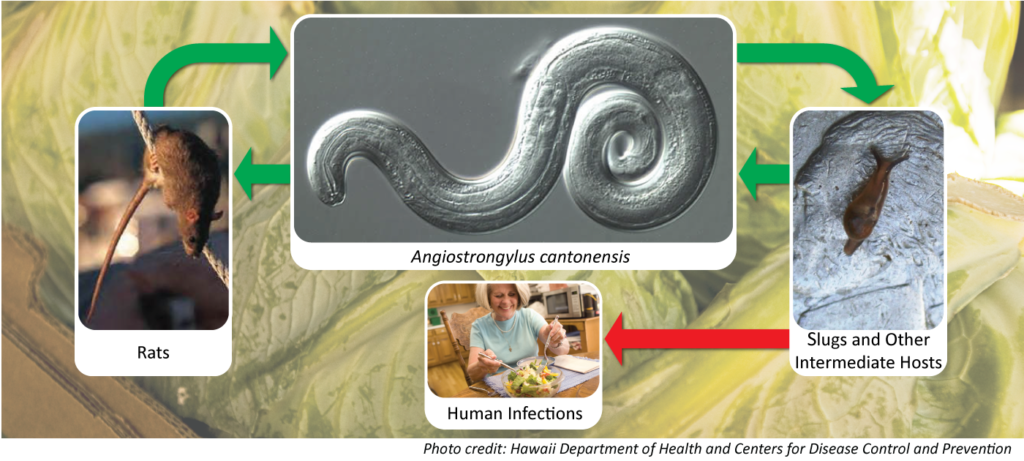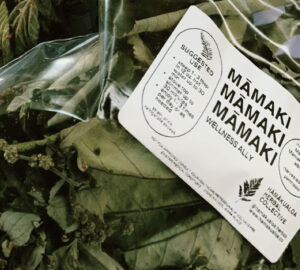What is rat lungworm disease?
Rat lung worm or Angiostrongylus cantonensis is a parasite that mainly lives in rodents such as rats and can infect snails and slugs that come into contact with infected rat faeces. People can be infected when they eat an infected snail or slug or even the slime that they leave behind.
What are the symptoms?
Most people may have no symptoms at all. Others may have only mild, short lived symptoms.
Very rarely, rat lung worm causes an infection (infestation) of the brain called eosinophilic meningo-encephalitis. People with this condition may have headaches, a stiff neck, tingling or pain in the skin, fever, nausea, and vomiting. The time between eating the slug or snail and getting sick is usually 1-3 weeks.
Anyone with these symptoms should seek medical assessment although other infections (such as meningococcal disease or pneumococcal disease) are much more likely causes of meningitis in children.
How is it spread?
The adult worms are found in rats. Infected rats excrete the parasite larvae in their faeces. The parasites can then infect snails and slugs that come into contact with infected rat faeces.
People can be infected when they deliberately or accidentally eat a raw snail or slug that contains the lung worm larvae or if they eat unwashed lettuce or other raw leafy vegetables that have been contaminated by the slime of infected snails or slugs. People infected with rat lung worm do not pass the infection on to others.
Who is at risk?
The parasite is more common in some parts of the world, especially in Southeast Asia, the Pacific Islands and Australia. We have seen an increase in cases here in Hawaii over the past 5 years and now we have confirmed cases on Maui. People are at risk if they eat raw snails or slugs infected with this parasite, either deliberately or accidentally. For example:
- Infants and children sometimes eat snails and slugs they find
- People may also inadvertently eat snails and slugs or their slime on lettuces and other raw produce
- Overseas travellers may sometimes be at risk especially if they are travelling to countries where the parasite is common and if they eat raw or undercooked fresh produce such as lettuce.
How is it prevented?
Rat lung worm disease can be prevented by some simple measures:
- Don’t eat raw snails or slugs. If eating snails, ensure they are thoroughly cooked first.
- Supervise infants and young children in environments where they may find snails and slugs. They like damp areas away from the sun and wind.
- Wash fresh vegetables and lettuces well before eating in case they have snails or slugs (or their slime) on them.
- Wash your hands well after gardening or handling snails or slugs. Wear gloves and use tongs to remove them from the garden and yard.
Consider controlling snails and slugs around vegetable patches and gardens and control vermin around the home. If snail pellets or rodent baits are used it is very important that precautions are taken to ensure young children don’t accidentally eat them.
How is it diagnosed?
People with meningitis caused by rat lung worm often have high numbers of certain immune cells called eosinophils in their blood or cerebrospinal fluid and this may suggest the diagnosis.
How is it treated?
Most people with symptoms recover fully without treatment over days, weeks or months.
However, the infection can sometimes cause severe meningitis that requires specialist treatment. The infection is occasionally fatal.
Further information
http://health.hawaii.gov/docd/disease_listing/rat-lungworm-angiostrongyliasis/




